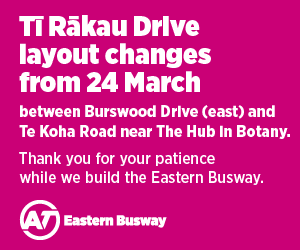
Below is a script of Prime Minister Jacinda Ardern’s speech today updating the Government’s Covid-19 response
Good afternoon
Cabinet met today to discuss the Omicron outbreak in New Zealand and to update our Covid-19 response. This was preceded by a ministerial call with the chief executives and senior officials from every Government department involved in the Covid response.
A quick status update on some key facts figures and decisions.
To date, we have identified 29 community cases associated with the January Omicron Cluster, all are in isolation.
Investigations into the source of the cluster are continuing, but we have yet to establish firm links to a known border case.
Nearly 60 per cent of eligible New Zealanders have now had their booster, and 1 in 5 children under 12 have had their first dose.
Bookings in the system are high – at 262,000 for which 186,000 are boosters – at over 1000 sites, with extra vaccination clinics such Auckland’s Westgate and Mt Wellington vaccination sites shifting to drive-thru this week to increase capacity. Book now at BookMyVaccine.nz or find a walk-in or drive-through at Healthpoint.co.nz
We know from overseas experience that we have a short window of around one to two weeks before Omicron takes off. Boosters and basic infection control can slow it down in this stage.
So if you are due your booster, if it’s been 4 months or more since you got your second shot, please get in there as soon as possible.
It will keep you safe from serious illness and it will preserve our hospitals.
Over 73 per cent of people over 65 have now been boosted and every DHB is on track to complete their booster programmes in Aged Residential Care facilities within the next week.
This is important, because as we saw with Delta around the world, high rates of vaccination among older populations and those at greatest risk of serious illness play a major role in preventing widespread outbreak, and so my message to over 65s is let’s do that again. Let’s reduce the threat of Omicron just like we did Delta.
Basic infection control also plays a valiant part in minimising the threat. Hand washing, distancing, masks.
Which is why, as previously signalled, today Cabinet has agreed to enhance the mask wearing protocols in the Red setting of the Covid-19 Protection Framework, to further assist the slow-down of Omicron.
Today I can announce the following changes to mask wearing at Red:
Masks must now be worn at food and drink businesses, close proximity businesses, events and gatherings. The existing exception of when you are eating, drinking and exercising still apply. These changes also won’t apply to non-public facing workplaces, swimming pools, and gatherings where you have the exclusive use of a premises. We really do encourage all workplaces to think though about mask use policies that protect your workforce. And I know many businesses are already doing so.
We’re also now requiring that a face covering be an actual mask – That means no more scarves, bandannas, or t-shirts pulled up over the face, for example. This is to ensure that it is a mask designed to cover your nose and mouth properly.
All workers who are legally mandated to be vaccinated must now also wear a medical grade mask (for example a Type IIR/Level2 masks or above) while working in public facing roles. These include the widely available ‘blue’ medical-grade masks that many are already wearing.
As you know, all primary and secondary school students Year 4 and up are already required to wear a mask. For consistency, they will now also need to wear a mask on Ministry of Education funded school transport services and public transport.
I know that some of these adjustments might cause challenges but the science has been updated, and these adjustments will slow the spread of the virus, save lives, and give us time to get more of the eligible population boosted. These changes will not come into force until 9 days’ time. This allows workplaces in particular, time to prepare.
The Ministry of Health will also be updating guidance on masks for the public. How to safely reuse masks for instance, and ensure the best fit.
My final word on masks. We have looked at a lot of overseas data on who is most successfully managing omicron. Masks play a significant role, when done right. We have made a major shift in New Zealand by adopting their widespread use, now we just need to tighten them up slightly so we get the best out of this measure.
Tomorrow Minister Verrall will set out our response to Omicron across the three likely phases we will experience. In phase one, the early stages, which we are in now, we will continue with the same testing, tracing and isolation settings as we have used before. That’s because this helps us to slow omicron down.
But as case load grows, these settings will change.
Looking to outbreaks around the world we have seen that where this is most important is in critical workforces such as healthcare, supermarkets, supply chains, and other industries and services critical to delivering the necessities of life.
Today, I can confirm how we intend to use Rapid Antigen Testing (RAT) to help critical workforces, businesses and supply chains to stay open – and that is to allow a Test to Return to Work approach.
This approach will mean that critical workers who are identified as close contacts will be able to use proof of a negative RAT to return to the workplace during their required period of isolation. This will minimise disruption to critical infrastructure and supply chains, helping to keep New Zealand going.
And while workplaces are already able to access RATs directly from suppliers, we will ensure tests are available for the test to work regime for critical workforces.
For now though, PCR tests are best, we need their accuracy to hone in on the spread while Omicron is in its infancy and can be slowed.
And in preparation we significantly increased our PCR or nasal swab testing capacity. We can do 60,000 tests a day, with surge capacity to just nearly 78,000 a day, which can be sustained for 7 days.
Once we reach phase two of the outbreak, and Omicron is more widespread in the community RATS will be more common in our testing strategy.
We have 83 million RATs on order, amid huge global demand, and we continue to pull out all the stops to secure what we need.
In total, The Ministry of Health has 4.6 million in the country.
We have confirmed delivery of an additional 14.6 million over the next 5 weeks. On top of that, we are awaiting the delivery schedule for an additional 22 million over this same period. That’s more than 40 million tests for a 5 week period in total. We continue, as does just about every country at present, to seek additional supply.
There are currently nine types of Rapid Antigen Tests approved by the Ministry of Health for use. A further 19 are under full technical assessment. This is an important process, as the effectiveness of RATs can range from 30% accuracy to 80%. I do want to reiterate though that while I know supply is tight, businesses are able to access RATS directly from approved manufacturers. We will also continue to do what we can to help them support and manage the health of their workforces.
Further, today you would have seen the work done to secure CO2 monitors and 5000 portable air cleaners for our schools to keep them open, keep our kids learning, while reducing the threat of Omicron in our schools.









